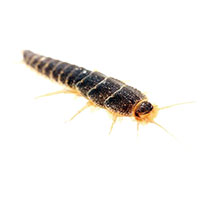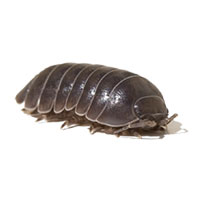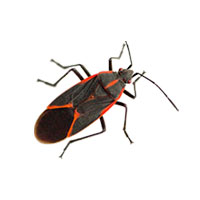Centipedes in Wisconsin
While thousands of species exist, only the house centipede tends to wander into homes. Even though centipedes are not particularly destructive, many people fear the fast-moving and intimidating-looking creatures.
Centipede Diet
Centipedes feed on a range of insects, including silverfish, firebrats, flies, carpet beetle larvae, spiders, and various small arthropods.
Centipede Habitat
House centipedes can live indoors in damp basements, closets, and bathrooms. Outdoors under stones, decaying firewood, objects on the ground, piles of leaves, and mulch.
Centipede Life Cycle
In their lifetime, female house centipedes lay a maximum of 150 eggs in damp soil during the spring and summer and care for the eggs until they hatch. Centipedes pass through an egg, larval, and nymph stage before reaching adulthood. Immature centipedes undergo 10 instars that cause their bodies to grow to accommodate additional pairs of legs. Adult centipedes live for approximately one year and overwinter in warm, moist places.
Centipede Nuisance
Despite the ecological benefits centipedes provide by preying on insects and other pests, they often cause psychological distress for the occupants of the homes they invade due to their disturbing appearance and darting motions. For this reason, pest control professionals regard the arthropod as a nuisance pest and will take action to remove the creature from homes, if necessary.
Signs of a Centipede Infestation
Vegetation
May notice adult centipedes in gardens, around house plants, or near other sources of vegetation.
Darkness
Often found in basements and other dark areas.
Moisture
Look for centipedes around sources of moisture, such as leaky pipes, drains, and bathrooms.
Food Sources
Centipedes are solitary creatures that rarely invade homes in large numbers unless the structure is already infested with other pests that the arthropods typically prey upon.
Centipede Prevention & Control
Centipede Prevention
Since centipedes are secondary pests that enter structures to pursue sources of food, prevention should center on making homes and buildings less favorable to prey like carpet beetles, flies, cockroaches, and similar insects.
- Traps: Sticky traps can help determine which pests are attracting the centipedes.
- Habitats: Any sites that make ideal centipede habitats (mainly moisture) should be modified or eliminated.
- Exclusion: Caulk cracks in concrete slabs and block walls. Seal the covers to sump pumps.
- Moisture: Reduce humidity levels by grading the soil around the building to facilitate water movement. The use of dehumidifiers may prove helpful.
Centipede Control
A Batzner Service Specialist provides treatment to the perimeter of the building foundation, paying special attention to cracks and crevices in a concrete slab or block walls, sump pumps, and floor drains. The treatment is outside and inside the building depending on the situation. The service specialist also makes sanitation recommendations to help prevent future infestations.
While centipedes in yards or gardens should be left alone, the ones that move indoors may require the attention of a pest professional. They can be controlled by eliminating their harborage areas or removed with a vacuum.
For centipede infestations, count on a professional pest management service to take care of the problem knowledgeably and successfully.
Need help with Centipedes?
We'll call you! Leave your information below.
Pests Belong Outside!
Leave your information below and we will give you a call back.
"*" indicates required fields
*During normal business hours. After hours inquiries will be returned the next business day.





